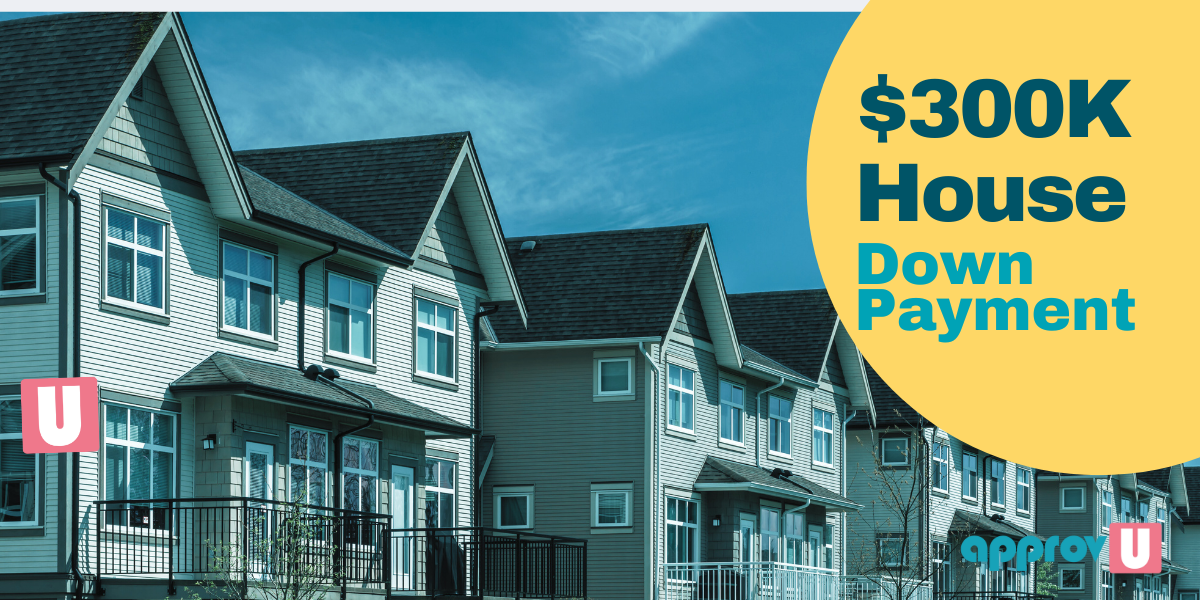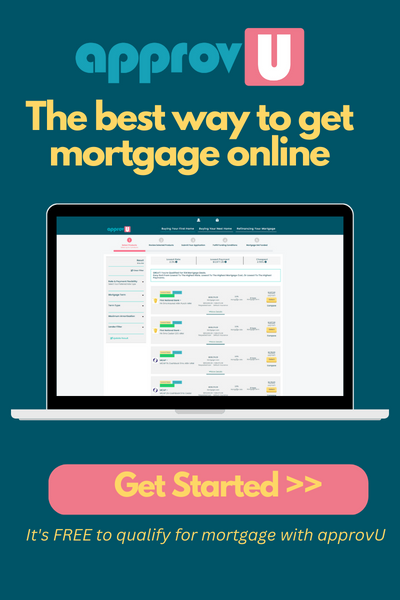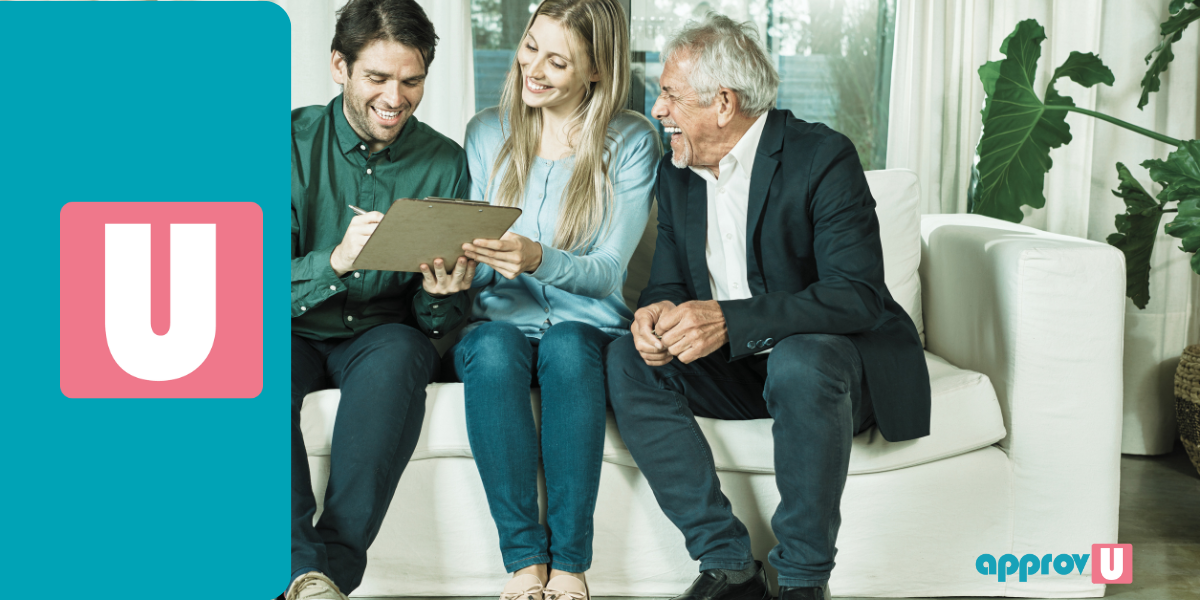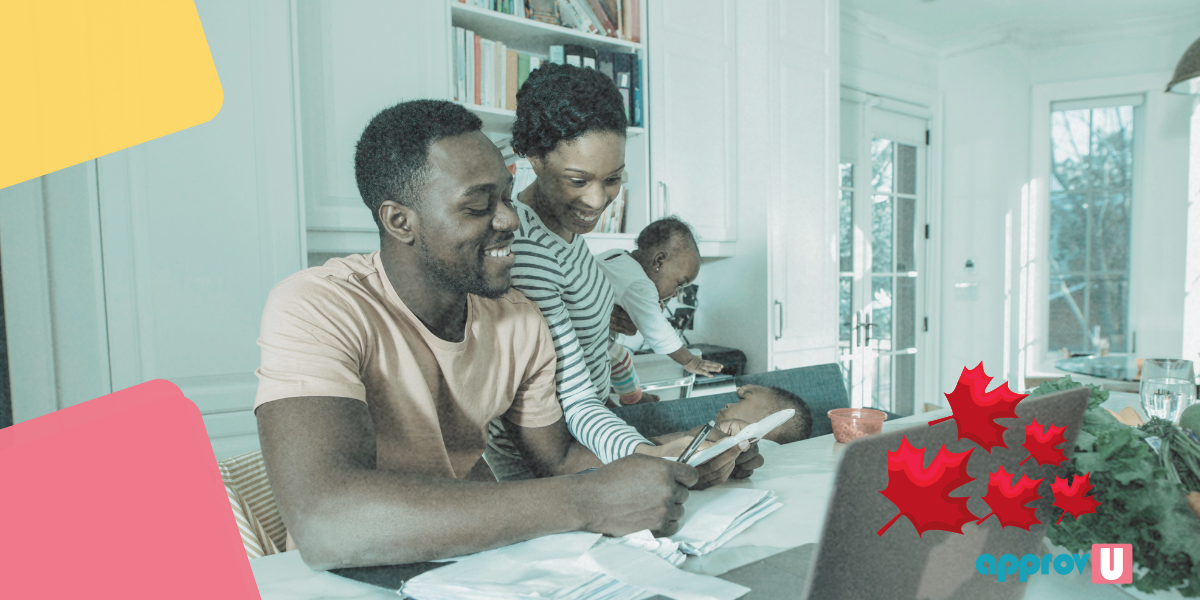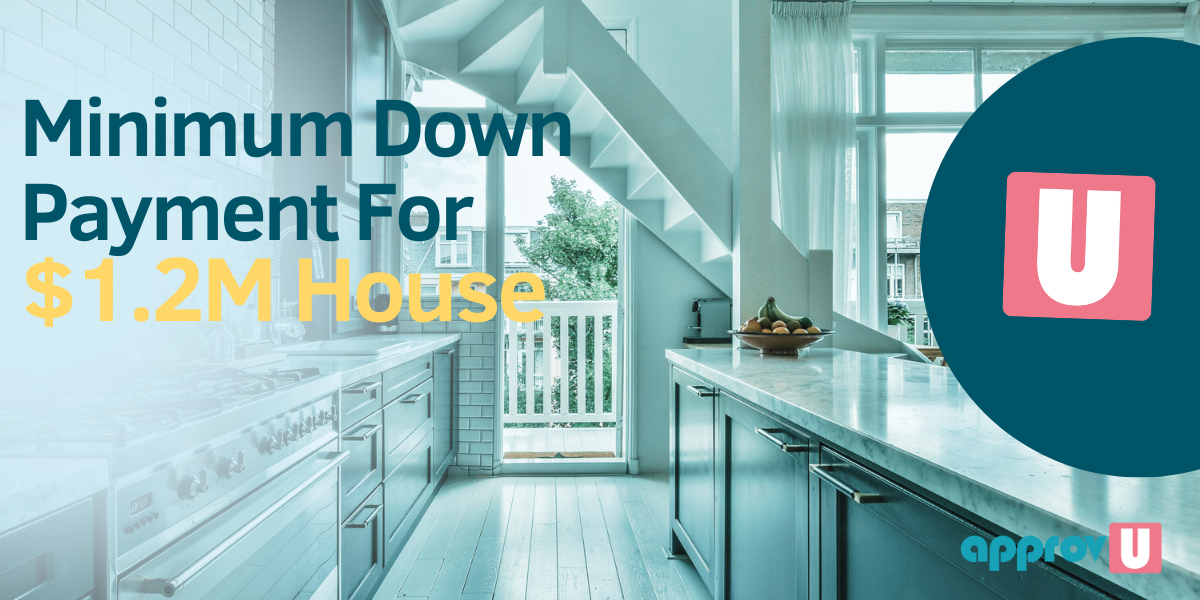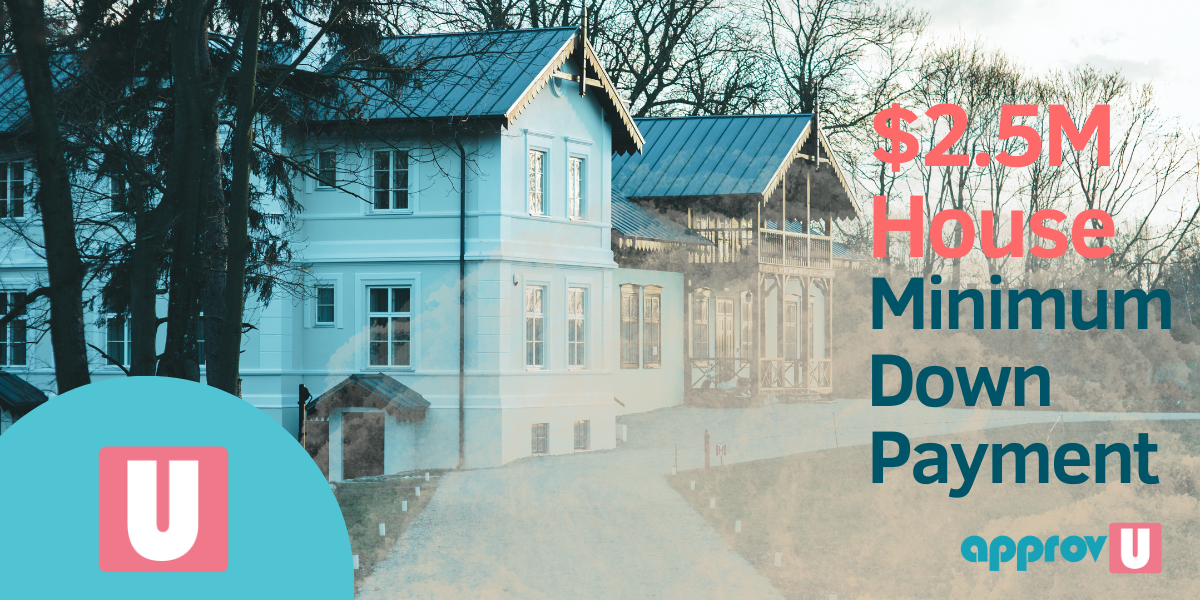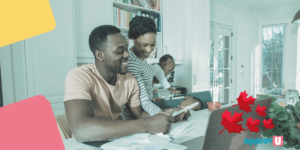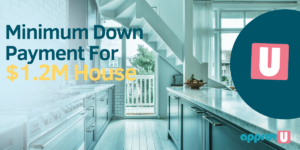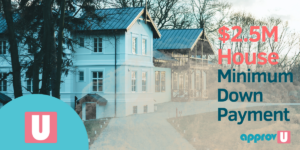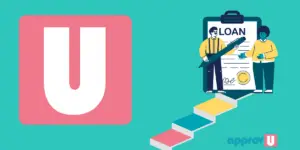Buying a home is a huge deal – it’s exciting but also a significant financial decision.
One of the most important things to figure out is the down payment for your $300,000 house!
That’s the chunk of money you pay upfront, and it’ll make a difference in the whole process!
Understanding those down payment rules is super important if you’re looking at a $300k house.
Things like your credit score, whether you’ll live in the house or rent it out, and how much money you make will all affect how much down payment you’ll need.
Better credit might let you put down less, and different rules apply if you’re not living in the house yourself.
Proving your income is also really key to getting a good mortgage.
This article will explain all the down payment details for a $300k house.
Whether this is your first home or an investment, having this information will help you plan like a pro!
Let’s get started and make your dream home a reality.
Understanding Down Payments for a $300,000 House: Importance and Impact
A down payment is the portion of a home’s purchase price that you pay in cash.
For a $300k house, the exact amount of your down payment will depend on several factors.
Think of it as your initial investment in the property.
Here’s why a down payment is important:
- A smaller mortgage: The more you put down initially, the less you’ll need to borrow from a lender. This means lower monthly mortgage payments.
- Lender confidence: A substantial down payment shows lenders you’re financially responsible and serious about buying a home.
- Potential for better terms: A larger down payment could lead to a lower interest rate on your mortgage, saving you money over the long term.
Down Payments on a $300,000 House in Canada: Effects on Insurance & Loan Terms
- Mortgage Insurance: If you put down less than 20% of the purchase price on a home, you must buy mortgage default insurance. This protects the lender if you can’t make your payments. Think of it as an extra cost that lets you buy a home with less money saved up. On a $300k house, anything below a $60k down payment means you’ll need this insurance.
- How it impacts your costs: Mortgage insurance premiums can be expensive. They’re usually added to your monthly mortgage payment. The larger your down payment, the less you pay for insurance, keeping your monthly costs down.
- Loan Terms (like interest rate): Lenders see a larger down payment as less risky. That means they might offer you a lower interest rate, saving you a lot of money over the long life of your mortgage.
How Credit Scores Affect Down Payments for a $300,000 House
The Role of Credit Scores in Mortgage Approval
Your credit score is like your financial report card.
It shows lenders how well you manage debt and pay your bills promptly.
A good credit score is crucial for getting a mortgage.
It increases your chances of getting approved and can also get you better loan terms.
Minimum Down Payment for Less than 600 Credit Scores
If your credit score is below 600, getting a mortgage gets trickier.
Lenders see you as a riskier borrower, so they’ll want a bigger down payment – at least 20% of the house price.
For a $300k house, that’s $60,000 upfront!
This is why improving your credit score is a smart move if you want to buy a home.
Minimum Down Payment for 600+ Credit Scores
Good news: your credit score is 600 or above!
Lenders will see you as less of a risk, which means you can put down a much smaller down payment.
In this case, it’s only 5% of the home’s price.
For a $300k house, that’s just $15,000 – much easier to save.
A good credit score makes buying a home more affordable and gets you into your place faster!
Your credit score is a big deal when getting a mortgage.
It affects whether you’re approved for a loan, how much down payment you’ll need, and the interest rate you’ll pay.
Before you start house hunting, work on understanding and improving your credit score.
This will help you get the best possible mortgage terms and make buying your dream home easier.
How Property Use Affects Down Payments for a $300,000 House in Canada
Buying to Live vs. Buying to Rent: Down Payments Explained
How you plan to use your $300k house makes a big difference in your down payment!
Here’s the breakdown:
- Buying to Live In: If this will be your primary home and you have good credit (600+), you could qualify for a down payment as low as 5%. That’s just $15,000 on a $300k property. This makes homeownership more accessible for many Canadians.
- Buying to Rent Out: The down payment rules are stricter if this house is an investment. You’ll need at least 20% down regardless of your credit score. That’s $60,000 for the same $300k house. Lenders see investment properties as slightly riskier, hence the higher upfront cost.
20% Minimum Down Payment for Investment Property
If you’re buying a property to rent out, be prepared for a 20% minimum down payment.
This rule is non-negotiable, even if you have excellent credit.
Lenders consider investment properties riskier since rental income isn’t always guaranteed (vacancies, repairs, etc.).
That’s why they want a larger down payment to protect themselves.
This difference in down payment rules is crucial to your financial planning.
Whether you’re buying a home or an investment, knowing what to expect will help you save the right amount and make your purchase successful.
Income Verification & $300K House Down Payment
Proving your income is a key part of getting a mortgage.
Whether you have regular tax documents or not, knowing the rules will affect how much you need to save for a down payment.
Understanding this helps you prepare financially and gets you closer to owning your own home!
Income for Mortgage and Down Payment
Lenders must ensure you can afford the mortgage payments when you want to buy a $300k house.
That’s why they need proof of your income.
Here’s what they’ll look for:
- Employment Validation: Employment letter and Paystubs.
- T4 slips: These show how much you earned from your job each year and the taxes you paid.
- Notices of Assessment (NOA): The government sends these after you file your taxes. They confirm your income and how much tax you owe (or get back).
These documents show lenders that you have a steady income and can handle the mortgage.
Without this proof, getting a good mortgage is much harder.
Non-Verifiable Income Type and Down Payment
If you’re self-employed, a freelancer, or have other income that’s hard to prove with tax documents, you’ll likely need a larger down payment.
This is because lenders see you as a slightly higher risk.
For a $300k house, expect to put down at least 20% as a down payment.
That means having $60,000 saved up.
The larger down payment helps protect the lender if things go wrong financially.
Scenario Analysis: Down Payments for a $300,000 House in Canada
Understanding how to afford a $300k house can feel overwhelming, especially when figuring out your down payment.
But don’t worry, we’ll simplify it for you.
We’ll examine different scenarios to determine how much you’ll need to save based on your credit score, income verification, and how you plan to use the property.
Let’s break it down into two situations to make it easier to grasp.
Scenario 1: Owner-occupied home with Credit Score Above 600 and Verifiable Income
Imagine you’re aiming to purchase a $300k house as your primary residence.
With a credit score above 600 and verifiable income through standard tax documents like T4 slips and notices of assessment, you’re in a favourable position.
Most lenders will require a minimum down payment.
- Minimum Down Payment Required: 5% of the purchase price.
- Actual Down Payment Amount: A $300k house comes to $15,000.
This scenario demonstrates the benefits of a solid financial profile.
It allows you to enter the housing market with a relatively modest upfront investment, which is advantageous for first-time homebuyers or those aiming to minimize initial costs.
Scenario 2: Credit Score Below 600, Unverifiable Income, or Purchase for Rental Use
Now, let’s look at another scenario. In this case, your credit score is below 600, and your income
- might be hard to verify because you’re self-employed or a freelancer,
- or buying the property to rent out.
In any of these cases, lenders see you as a higher-risk borrower or are dealing with a higher-risk investment, which impacts the down payment requirement.
- Minimum Down Payment Required: 20% of the purchase price.
- Actual Down Payment Amount: For a $300k property, you’ll need $60,000 as a down payment.
This scenario highlights the challenges individuals who can’t meet the lower down payment threshold criteria face.
Whether due to credit issues, income verification obstacles, or the nature of the property investment, the need for a larger upfront sum emphasizes the importance of substantial savings and thorough financial planning.
What Does This Mean for You?
Figuring out which scenario fits your situation is the first step to planning your home purchase.
Here’s what to do based on where you fall:
Scenario 1 (Good credit, easy-to-prove income, living in the house)
- Keep your credit score healthy!
- Ensure your income is easy for lenders to verify (tax documents, etc.).
- This sets you up for the lowest possible down payment.
Scenario 2 (Lower credit, income hard to prove, or buying to rent)
- Focus on saving a bigger down payment.
- You might have to adjust your timeline or look at ways to improve your credit score.
Every situation is different, but knowing your down payment requirements can help you make a solid plan to buy a $300k Canadian home.
Down Payment Saving Strategies for a $300K House in Canada
Saving for a down payment on a $300k Canadian house takes planning and effort.
Here’s how to tackle it:
- Know your target: Determine exactly how much down payment you need (5% or 20% of the purchase price).
- Budget time: Determine where to cut spending from your current budget and put that money towards savings instead. Apps can make this easier!
- Special account: Use a high-interest savings account or a Tax-Free Savings Account (TFSA) to separate your down payment money and earn a little extra.
- Make it automatic: Set up automatic transfers from your paycheck straight into your savings account. You won’t even miss the money!
- Cut back: Look hard at where you’re spending money and see what you could live without for a while – less takeout, shorter vacations, etc.
- Boost your income: Even a little extra cash from a side gig or selling unused things can speed up your savings.
Government Programs for Down Payments on a $300,000 House in Canada
Canada has programs designed to help people buy their first homes.
Here are the main ones to look into:
- First-Time Home Buyer Incentive: The government helps with your down payment, reducing your mortgage. Check if you qualify.
- Home Buyers’ Plan (HBP): This lets you use up to $35,000 from your RRSP for a down payment (you’ll have to pay it back later).
- Land Transfer Tax Rebates: Some provinces give first-time buyers a break on this closing cost. See what’s available where you live.
- Other Local Programs: Your province or city might have other grants or help for homebuyers.
Final Thought: Down Payments for a $300000 House
Buying a $300k house in Canada is a huge accomplishment!
Understanding how down payments work is key to planning for this goal.
Your credit score, how you’ll use the house, and income all affect how much you need to save.
The good news is, you don’t have to do it alone. Here’s what to remember:
- Set goals: Determine your down payment target and plan savings.
- Budget smart: Track your spending and cut back where you can.
- Boost your income (if possible): Even a small side gig can help.
- Use government programs: These can make a big difference in how much you need to save!
Buying a house takes work, but it’s incredibly rewarding.
Every bit of planning and saving you do now gets you closer to owning your place and building your desired future.


